
The state of content operations in 2025 across organizations is exciting. We’re seeing more desire than ever to mature content operations, strong confirmation of the success factors, and a lot of initial success with artificial intelligence (AI).
At the same time, we’re seeing a much more volatile environment due to rapid technology and business changes. And many organizations are struggling to scale their success with AI. To boot, many challenges reported in the past, such as lack of integrated strategy and poor communication, have reared their ugly heads again.
How do we know? The Content Science team just completed the latest iteration of our research into what makes content operations successful (or not). Here, we’re sharing highlights from insights gained in surveying and talking to more than 100 content executive, leaders, and team members with organizations such as Apple, Mayo Clinic, Cencora, Amazon, Fidelity, AT&T, Thomson Reuters, and Arthritis Foundation.
Let’s take a look at some highlights.
How Mature Are Most Organizations’ Content Operations?
If you haven’t checked out our content operations maturity model, you can explore the model here as well as in the full 95-page report. We developed this model in the spirit of all models are wrong, but some are useful. And over the many years we have conducted this research, this model has held up as useful.
Overall, we’re seeing a promising trend toward more maturity since our last report.
- Only 5% of participants report operating at level 1, a significant drop from 20% in 2023.
- A quarter of participants report operating at level 4, which is a sizable increase from 5% in 2023.
That said, most organizations, 61%, operate at levels 2 and 3, as you can see in this chart.
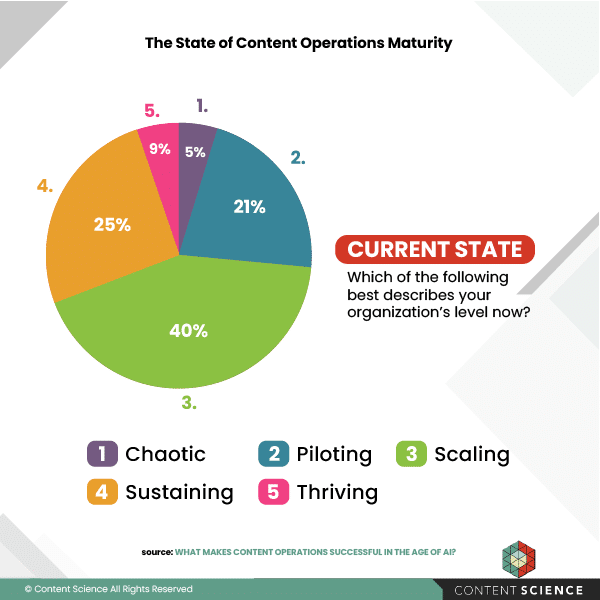
We also see a promising trend toward more success, with 30% of participants reporting their organization is very successful or extremely successful—a notable increase from 19% in 2023.
Our analysis also confirms a strong correlation between content operations maturity and content success, similar to our 2023 update. As you can see in this chart, 80% of the extremely successful and nearly 70% of the very successful operate at maturity levels 4 and 5.
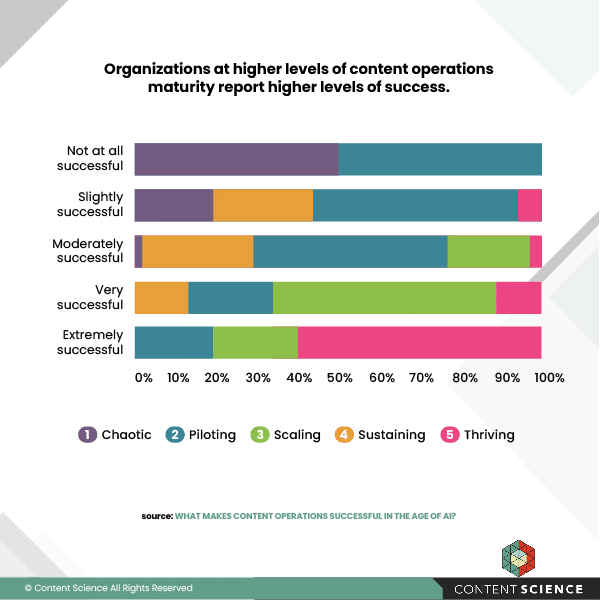
Let’s consider whether organizations value content operations.
Do Organizations Care About Improving Content Operations?
It’s a fair question. If most organizations are satisfied with being at levels 2 and 3, then we can carry on happily and don’t need to change. But, similar to 2023, our research participants are not satisfied with lower levels of maturity.
- The majority of participants, 64%, report striving for a higher level of content ops maturity than their current level.
- Nearly half of participants, 45%, report striving for level 5, which is nearly double the 25% aspiring to that level in 2023.
As you look at this chart, you might wonder why anyone would aspire to levels 1 or 2. In our experience and interview discussions, that kind of answer suggests the participant is not optimistic that their organization can or will change.
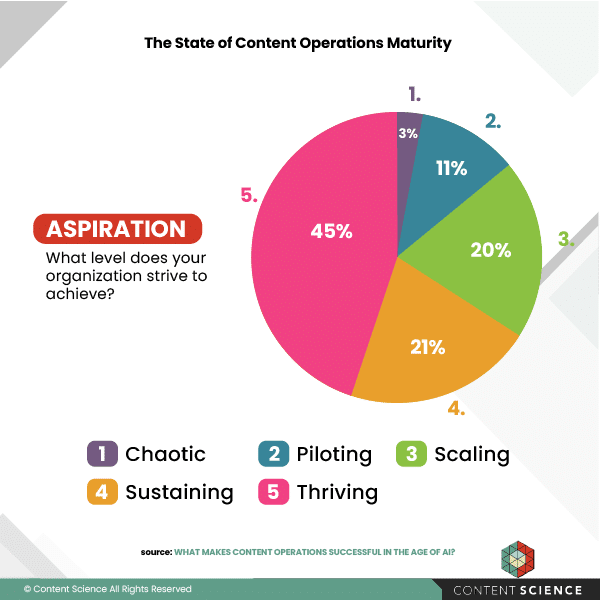
These more ambitious aspirations for higher levels of content operations maturity signal that organizations are recognizing the value of content operations. And they’re right to do so.
Do Organizations With Mature Content Operations Experience More Success?
Yes. Similar to past updates to this study, we find a strong correlation between higher levels of content operations maturity and reporting higher levels of content success.
Organizations at higher levels of content operations maturity are also less likely to report challenges that hold other back, such as lack of content strategy.
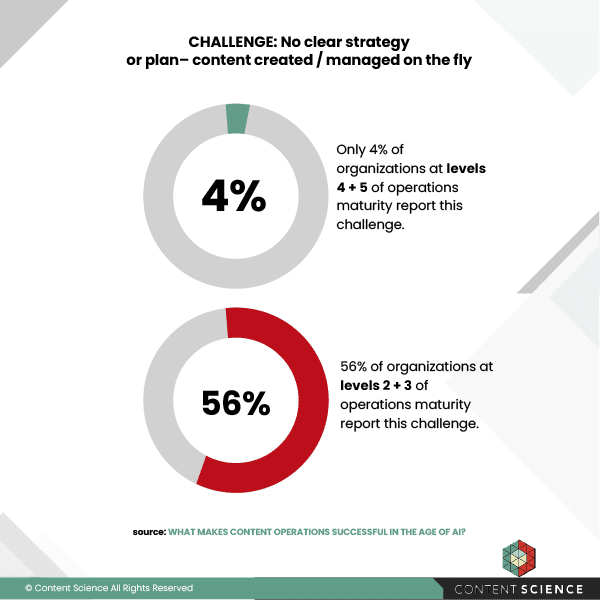
Let’s take a closer look at how organizations are using AI.
Are More Organizations Adopting AI in Content Operations?
Yes, many more organizations are at least experimenting with AI. Nearly 90% of participants report using AI, and nearly 20% report AI as central to their content approach, as you can see in this chart.
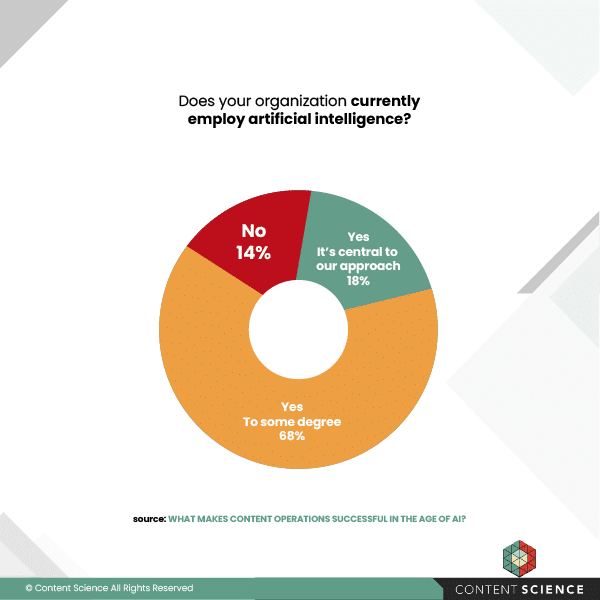
And many participants report success across a wide range of use cases and contexts. Here is one example focused on more efficient and effective metadata:
We built a genAI metadata assistant application to help content creators select taxonomy tags and descriptive metadata for their content. This has been a successful tool for saving content team members time and, by giving the application strict rules, we have been able to reduce overtagging of our content.
And here is another example focused on tailoring content to audiences:
We’ve produced a document with AI that we customize to audiences and can turn a new one for a new audience around in less than a day.
However, when it comes to scaling adoption of AI, organizations are struggling–especially for content creation use cases. Slightly less than a third of participants report moderate or fast progress, and slightly more than a third report slow but steady progress. The rest are not making progress either because haven’t started or the effort stalled, as you can see in this chart.
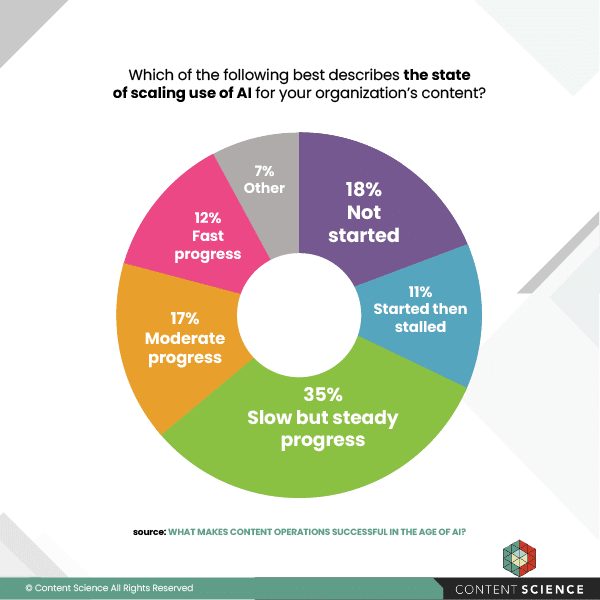
The good news? Organizations with higher levels of content operations maturity are more likely to report moderate or fast progress with scaling use of AI.
How Can I Learn More from the Latest Study Report?
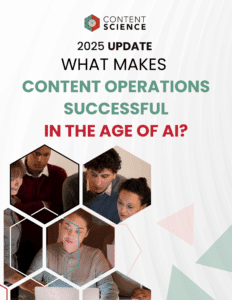
The full 95-page report, What Makes Content Operations Successful in the Age of AI?, is available for free at the Content Science website. The report covers
- The value of content operations today.
- The current state of content operations maturity and success.
- The factors that set the most mature and successful apart, such as content intelligence and content governance.
- Top challenges in maturing content operations now.
- The impact and potential of AI.
- Perspectives from leaders with FedEx, ServiceNow, EE, Thomson Reuters, Content Science, and more.
- Commentary, executive summary tear sheet, and checklist to support action.
We’ll also include relevant findings in our webinars, workshops, and on-demand certifications like Content Leadership + Operations.
Events, Resources, + More
New Data: Content Ops + AI
Get the latest report from the world's largest study of content operations. Benchmarks, success factors, commentary, + more!
The Ultimate Guide to End-to-End Content
Discover why + how an end-to-end approach is critical in the age of AI with this comprehensive white paper.
The Content Advantage Book
The much-anticipated third edition of the highly rated book by Colleen Jones is available at book retailers worldwide. Learn more!
20 Signs of a Content Problem in a High-Stakes Initiative
Use this white paper to diagnose the problem so you can achieve the right solution faster.


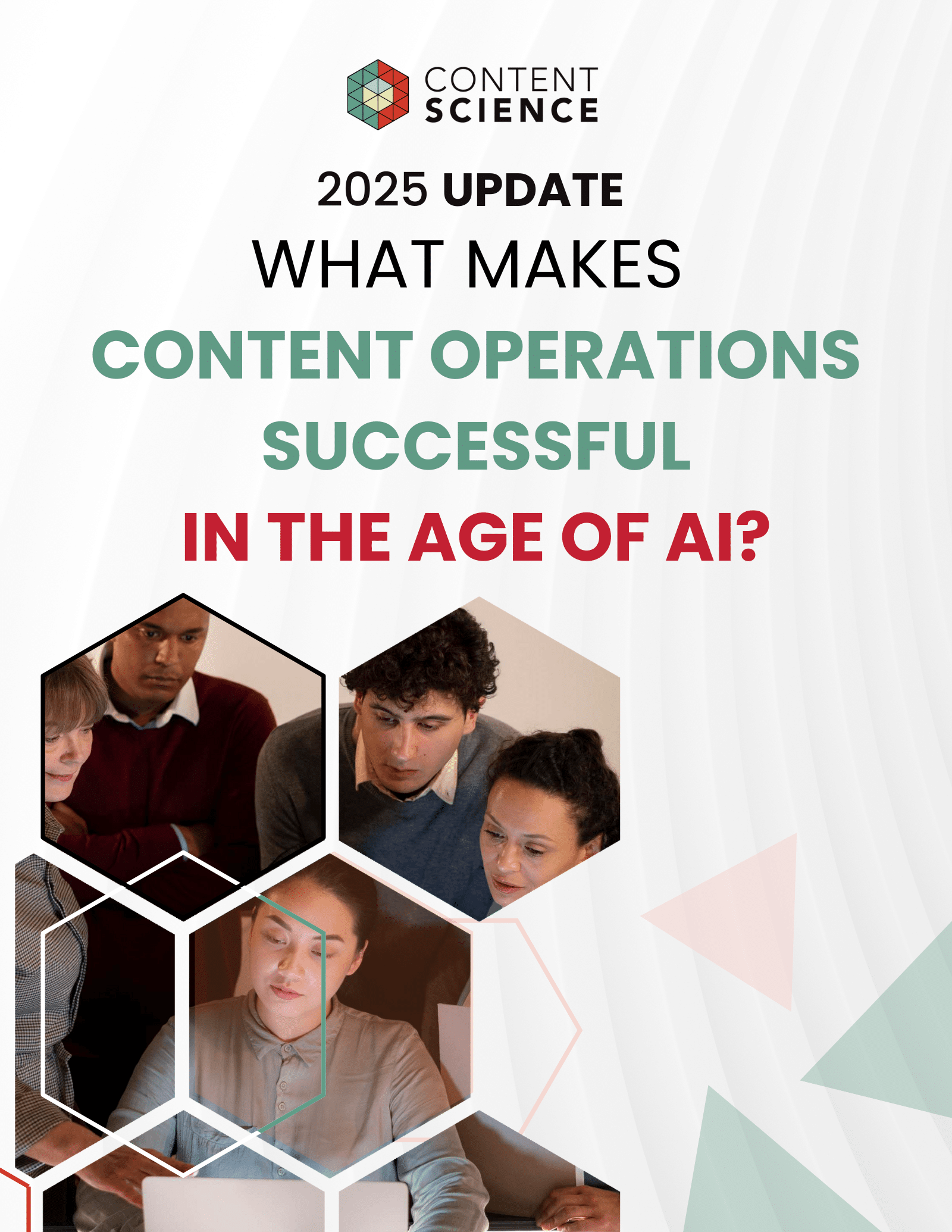



Comments
We invite you to share your perspective in a constructive way. To comment, please sign in or register. Our moderating team will review all comments and may edit them for clarity. Our team also may delete comments that are off-topic or disrespectful. All postings become the property of
Content Science Review.